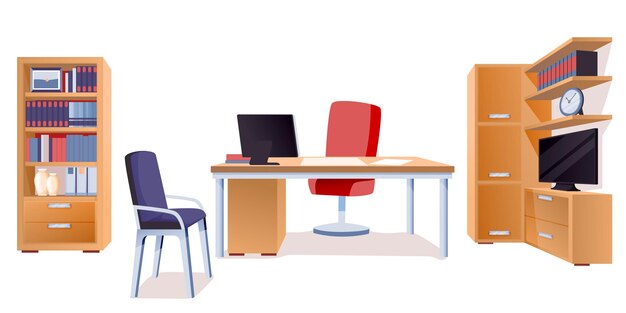HOW TO SELECT THE RIGHT ERGONOMIC CHAIR FOR YOUR OFFICE

It may not seem like a big deal, but choosing the right ergonomic chair for your desk or office can make a difference in your fitness and convenience. Sitting for an extended duration of time can put a large amount of pressure on the back and spine, which can result in back issues and severe discomfort. Understanding more regarding how to choose the right ergonomic office chair can assist you to avoid these fitness issues, enhance your posture and remain comfortable throughout your work day.
Look for the capacity to modify the chair's height
The height of your ergonomic chair should be fully adaptable. The chair's seat should be conveniently moved either upwards or downwards. This adjustment will let people of different heights comfortably sit in the chair. Ensure you can adjust how high or low the seat is before buying your chair.
-
1. A seat height of 15” to 22” will comfortably seat a person between 5'0" to 6'4" tall.
-
2. Most chairs will offer only a short range of adjustments.
-
3. Your feet should be capable to sit flat on the floor while your knees are bent at ninety-degree angles.
View who will be utilizing the chair
Before you choose an ergonomic chair, you'll desire to consider who will be utilising the chair. The chair will require to comfortably accommodate anyone who will sit in it or be capable to be modified to fit them. Make sure your chair is the right fit for anyone in your office before making a purchase.
-
1. The chair you are interested in should comfortably fit the individual it is planned for.
-
2. Many ergonomic chairs will be adaptable and sufficient to accommodate almost everyone.
You may also learn OFFICE FURNITURE TO DESIGN A WORKSPACE FOR GREATER PERFORMANCE
Make sure the components of the chair can be separately modified
A suitable ergonomic chair will permit you to alter each part of the chair by itself. You should be capable to move the armrests, seat and back supports independently of each other. This level of customization will let you make the chair a fine fit for anyone that might end up using it.
-
1. You may like to avoid chairs that don't permit adjustments.
-
2. Normally, you will want to pick chairs that have a huge number of adjustable features.
Check the chair for fine upper and middle back support
Proper ergonomic chairs will deliver full upper and middle back support. If you are going to be sitting for an extended period of time, keeping your back and its natural form will be significant in preventing damage or strain. Make sure your ergonomic chair has amazing upper and middle back support before completing a purchase.
-
1. The chair backrest should be between 12” & 19” wide.
-
2. Your chair's backrest should provide the appropriate curve and shape of your back.
-
3. Most backrests will be adjustable to support the contours of your back.
Inspect the chair's lumbar support
Chairs without proper lumbar support will have a damaging and flattening effect on your lower back. The lower back has a natural inward curve and badly conceived chairs will cause this curve to straighten out. Make sure your chair allows you to maintain your lower back's normal curvature to support your back to stay vital and healthy.
-
1. Lumbar support can be accommodated by raising or decreasing the chair's back support pad.
-
2. Chairs that have an unadjustable rear won't be the right fit for everyone.
Ensure the backrest can be modified or reclined
Being capable to recline or modify the back of your chair will impact the amount of weight put on your lower back. If you are intending on being seated for the majority of the day, reclining can assist relieve stress on your spinal discs and lower back muscles.
-
1. Avoid purchasing an ergonomic chair that can't recline.
-
2. Most chairs can be locked into the most relaxed reclined position you find.
-
3. Back pressure is lowest between 110° and 130° of reclining.
-
4. Individuals with lower back injuries can benefit the most from reclining chairs.
Make sure the seat is the proper size for you
Seats that are too big or too small can impact your comfort and fitness when using them for an extended duration of time. When you are exploring for a good ergonomic chair, you'll want to make sure that the seat is the right size for you or anyone using it. Keep some of these standards in mind when evaluating the seat size of an ergonomic chair:
-
1. The seat should be almost an inch broader than your hips.
-
2. The seat pan should be placed just behind your knees.
- 20.03.2023
-
Category:
- Office Furniture